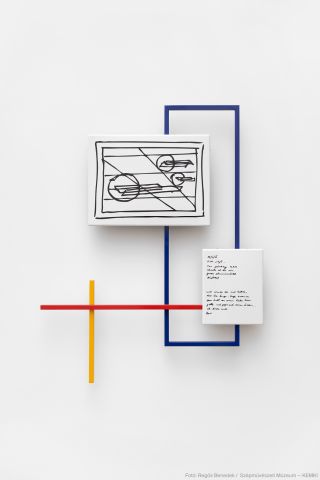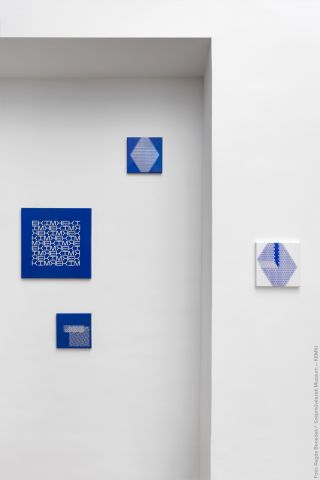‘research’
ALBERT Ádám: My Appropriations (László Moholy-Nagy), 2022
… Bank from the artist’s nephew, Levente Nagy in 2015. The collection primarily aids in scholarly research. In addition to lists of artworks, books and other publications, it also includes a few autograph letters and early watercolours, which had been left in the family’s possession.
ALBERT Ádám: System Analysis (KEMKI) I–IV, 2022–2023
… “The aim is no longer to make the letters legible, but to create new systems. Just as in a research report, what is presented is not the raw data itself, but their interpretation from a certain perspective.” (Ádám Albert) It is by abandoning the traditional, linear principle of reading, by breaking away from the usual process of perception, and by interpreting the letter-structures as puzzles, that we—detached from the constraints of interpretation—can avail ourselves to the patterns …
László Beke Archives
… structuralism, linguistics, semantics, semiotics, and visual education. His methodological research has explored problematics related to iconography, iconology, story art and sacred/transcendental art. The conceptual scope of the Archive includes the phenomena of the alter ego, the mirror, the image, the metaphor, the icon, and the comic novel, as well as the phenomena of perspective, symmetry, ornamentation, pattern, and mimesis—from the avantgarde to post-contemporary art (PoCo). …
The Design Center Archives
… as the Design Center), became part of the collection of the Museum of Fine Arts – Central European Research Institute for Art History (ADK). The organisation was established in 1975 within the framework of the Chamber of Commerce, which—alongside the Industrial Design Council Office—carried out representative and influential work in the field of Hungarian industrial design until the late 1980s. The Design Council dealt with the theoretical (methodological, ergonomic, educational) and economic …
Zsuzsa G. Fábri's Artist Portrait Collection
… estate, was donated to the Photographic Collection of the Museum of Fine Arts – Central European Research Institute for Art History (ADK) at the beginning of 2024. This outstanding collection of negatives and vintage enlargements is richly supplemented with additional information. The material also includes numerous never-before-seen photographs of well-known Hungarian artists (Miklós Borsos, Amerigo Tot, Károly Gink, Károly Koffán, János Kass, Endre Bálint, Ilona Keserű, etc.). In addition …




